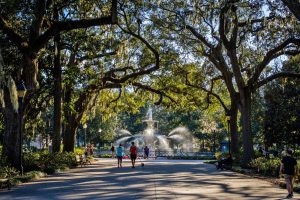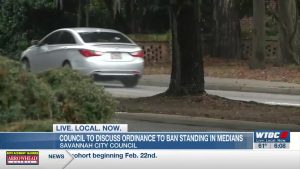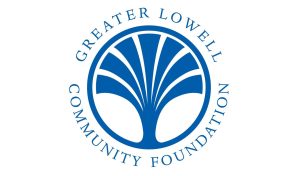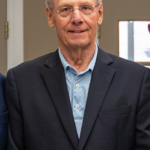 Last weekend, I spent the better part of three days in Savannah Georgia for a wedding. It was my second time visiting a place The Times of London has dubbed “the Sweetheart of the Deep South,” but the first time I got to explore it to any extent.
Last weekend, I spent the better part of three days in Savannah Georgia for a wedding. It was my second time visiting a place The Times of London has dubbed “the Sweetheart of the Deep South,” but the first time I got to explore it to any extent.
Savannah has a population of just under 150,000 people. It features a vibrant shopping district, a well-developed riverwalk area with outdoor dining, bars, shops and music that can be enjoyed from up-close views of steamboats and giant cargo ships floating by to dock in America’s third busiest seaport.
For the environmentalists, there’s a plethora of public parks and walkways offering shade, farmers markets, recreational activities, playgrounds and the requisite number of monuments.
 Other than the lack of international culture (if it exists, I didn’t notice it), Savannah was everything Lowell should and could be as a destination city.
Other than the lack of international culture (if it exists, I didn’t notice it), Savannah was everything Lowell should and could be as a destination city.
It was a surprisingly enjoyable experience. So much so, that it didn’t occur to me until the Uber ride back to the airport early Sunday morning that there was one common big city sight sorely lacking.
Not once did anyone ask for spare change because his car broke down and he had to get to the train station. Nor did I see a single cardboard sign at a busy intersection telling me that God blesses. If there were tent cities, they were tucked away somewhere out of view, certainly not visible from the busy on and off ramps of Savannah’s roads.
 The wife and I did encounter a gentleman sitting on a doorstep with what looked like his belongings and a cute little dog sleeping by his side. Neither one bothered to look up at us.
The wife and I did encounter a gentleman sitting on a doorstep with what looked like his belongings and a cute little dog sleeping by his side. Neither one bothered to look up at us.
On park benches, there were folks gathered with backpacks, some laying down and others shooting the breeze, less than 25-yards from a closed off stretch of street where people dined and shopped. None of them approached the crowds of tourists and residents.
Back home, with the specter of yet another Lowell City Council meeting hijacked by talk of tent cities and protocols putting the “needs” of a few dozen homeless over the 115,000 people trying to raise a family and make a better life for themselves, I did a little digging to see if there was something Savannah was doing that Lowell could emulate.
I discovered that the same 2015 Supreme Court ruling that shot down Lowell’s panhandling ordinance did away with Savannah’s as well.
As expected, the panhandling issue soon returned to the “Sweetheart City” in a big way, but rather than succumb to the do-gooders demanding squatting rights and the right to “live in dignity” surrounded by human feces and syringes, Savannah’s City Council fought back.
 In February of 2021, they passed another ordinance aimed at panhandlers. This one took a different path. It prohibits pedestrians from “impeding the flow of traffic by soliciting from vehicles while standing in roadway medians.”
In February of 2021, they passed another ordinance aimed at panhandlers. This one took a different path. It prohibits pedestrians from “impeding the flow of traffic by soliciting from vehicles while standing in roadway medians.”
Public safety was “cited” as one reason, given a handful of pedestrian fatalities leading up to the vote. Perhaps in a nod to environmentalists, they also included language about polluting those medians.
Based on my three-day observation, it worked like a charm.
Their City Council didn’t cave. Instead it stood up for the rights of 150,000 residents, the businesses and the 15.2 million tourists estimated to visit Savannah annually. They prioritized them over the holier than thou compassionate crowd whose political activism never involves allowing a tent or two in their back yard, only near yours.
No, the new law did not eliminate the homeless problem in their city. It still exists, as it does in most every mid-size and large American city, and throughout much of the world. What it doesn’t do is overwhelm every other aspect of their city to the point where panhandling is arguably the most vibrant downtown economic activity.
 Now, if I sat on the Lowell City Council, I’d make a motion to give our tent city residents priority for any open city jobs, with their living wage and even more living insurance and benefit packages. See how many actually want to take up the offer of a good job that might actually help someone out of the “unhoused” category. But then again, I can be a jerk like that.
Now, if I sat on the Lowell City Council, I’d make a motion to give our tent city residents priority for any open city jobs, with their living wage and even more living insurance and benefit packages. See how many actually want to take up the offer of a good job that might actually help someone out of the “unhoused” category. But then again, I can be a jerk like that.
Fortunately for Lowell, the eleven people holding council seats and those working in the Administration are far more compassionate, and certainly more politically correct. Hopefully when the latest lecture on solving homelessness is finished, one of them reads this column and tries something along the lines of what Savannah did to benefit those who hold up their end of the “social compact” my fellow Insider Jack Mitchell likes to refer to.
Will it solve homelessness in Lowell?
Nope. That’s a problem only state and federal government can begin to tackle.
Will it improve Lowell’s image for those who live and visit?
Three days in Savannah say it’s worth a shot.















2 responses to “A Roadmap To and From Savannah”
Great article and very good summary of the differences you saw in Savannah and Lowell. As is typical…our leaders often focus on the very few, over the needs of the majority. What are the outcomes we want and need to raise our city to be a destination that is safe and welcoming? How many times have we had this discussion. The answers are plain and simple but if no one is willing to do what’s best for the residents, businesses and visitors alas things will stay the same or worsen.
Lowell is not, nor will it ever be Savannah Georgia, though they’ve apparently figured out a clever way to curb panhandling down there.
Councilor Mercier made some excellent points at the City Council meeting tonight. She prefers to listen to people who offer solutions over those making demands.
If the City of Lowell truly wants to make inroads on solving the homelessness issue, then the road best traveled leads to “Housing First.”
Don’t underestimate Lowell’s capabilities as a leader in homelessness prevention. The partnerships are in place. What’s needed now is some serious synchronization and coordination of the programs that already exist.
But, unfortunately, as your friend Jack Mitchell also likes to say, “Poverty is big business in Lowell.” There’s the rub.